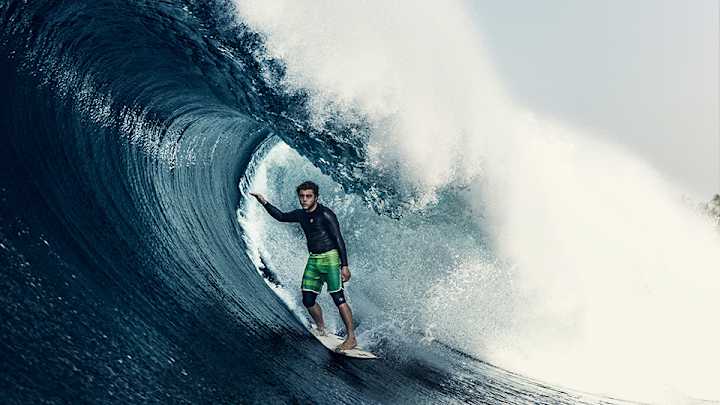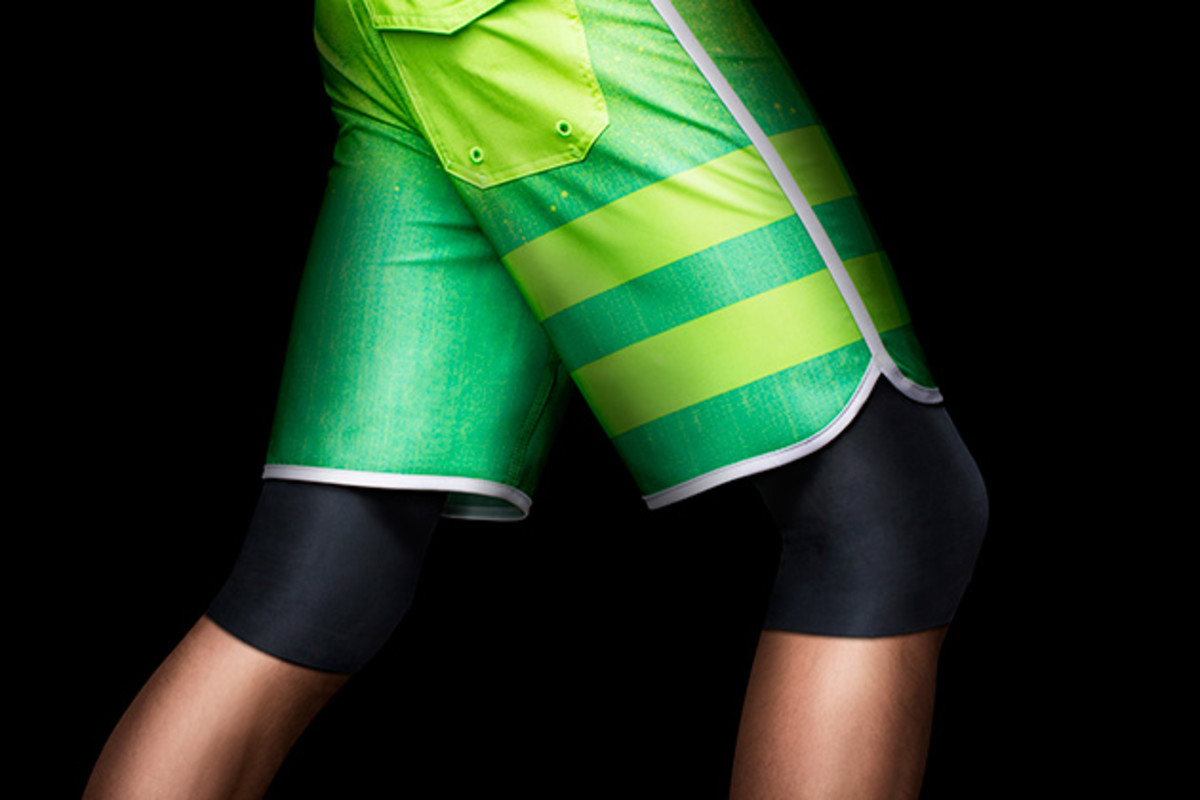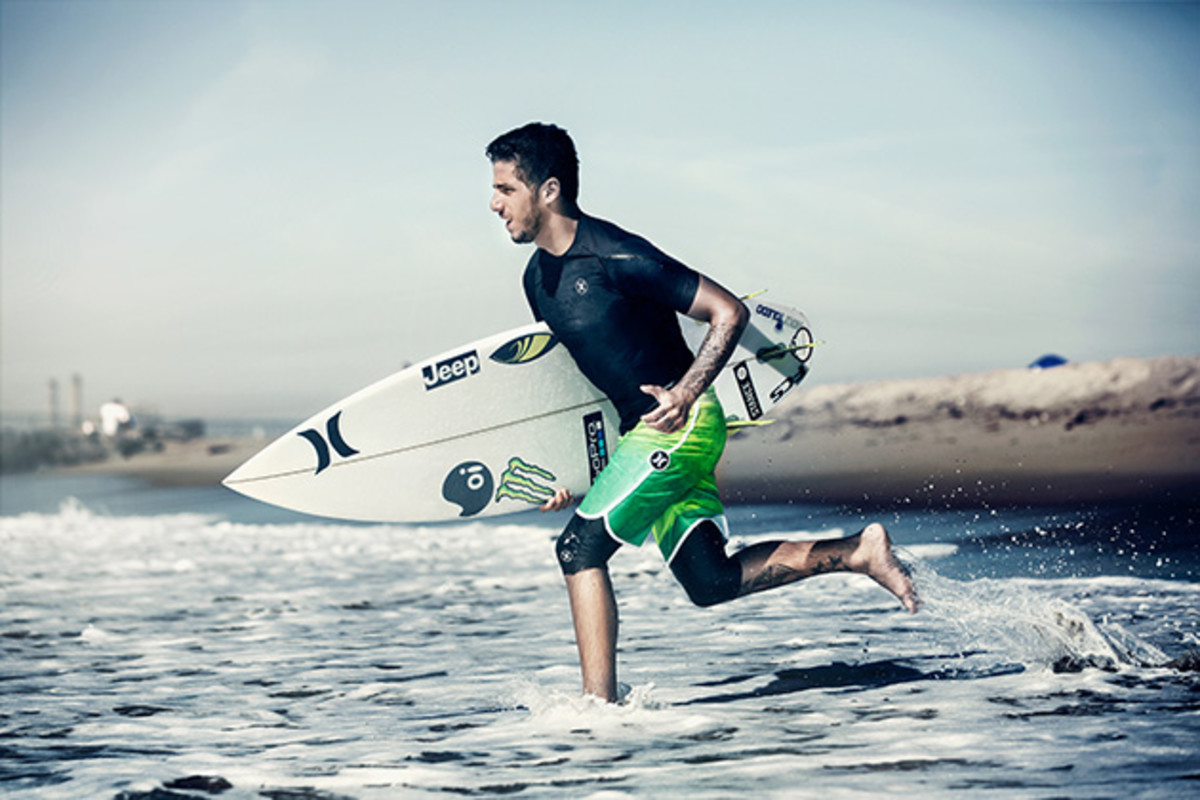Going one-on-one with Ryan Hurley on designing performance surf gear

Ryan Hurley loves to solve problems. That’s how the son of Hurley’s founder, Bob, and creative director of a California-based brand under the Nike umbrella starts his design process.
“I love the art of problem-solving,” he tells SI.com. “That is where innovation starts.”
Ryan uses the art of performance to find design solutions and then “weave in the emotional connectivity. Function is almost leading the style and the output of that is a combination of performance benefits and style coming together as something new.”
The Art of Surfing: Can board design really affect performance, scoring?
technology—cabling to keep the movable fabric locked to the waist.
“For the surf world, this is definitely something new,” Ryan says. But obsessing about boardshort technology isn’t new to Hurley—the man or the brand—and the concept of tech innovation really reaches into the sport’s history, Ryan says.
Tech as we know it has not long been a part of surf performance, but trace the sport’s roots to custom surf board shapers—Bob, who worked at Billabong before starting Hurley in 1999, learned the art in the 1970s—and Ryan says surf athletes have long had a relationship with fine-tuning equipment for performance.
“The idea of performance surfing has been around since the dawn of the custom surfboard,” Ryan says. “The opportunity for sure has been to take that same thinking to how we approach in the water for these guys and girls to surf in.”
Hurley was the first to introduce ultra-lightweight four-way stretch on boardshorts during a time, Ryan says, when the industry placed a focus on bulk and unnecessary embellishments. The new Hyperweave has gone even lighter, reducing weight in the waist and elsewhere to create efficient stretch and durability.

Part of this focus on technology comes as Ryan’s personal drive. And part comes from Hurley’s relationship with Nike, which has been a wholly-owned subsidiary of the giant company since 2002. As Hurley and Nike work to blend the tech-minded focus of the Oregon-based brand with the surf culture found at Hurley, something Ryan says “can always continue to get better,” he says the passion for solving problems runs through both teams. And having the ability to leverage solutions from other sports and then apply them to water-based design solutions gives Ryan’s team an edge—and a distinction—in the surf industry.
And that works for Ryan too. “I get kind of bored if it is just about visual aesthetics,” he says about design. “I lose interest in that pretty quickly. It is fun and an art form, but something that drives me is the real benefit-driven solution. I like to start with the problem and work it out. The visual manifestation of that, if there was a Hurley ethos, is more of a reductive design philosophy.”
Grain Surfboards produces works of wave art, each handcrafted in wood
Whether design or performance, Ryan has the same goal. He wants to strip away everything unnecessary and leave only what enables performance. “That is the visual connection for style preference for the athlete or the consumer,” he says. “I don’t know if I have a word for my style approach I could give you, but it is much more of a reductive design philosophy than adaptive. (Hurley is) trying to remove and purify the idea to its purest form and do that really well.”
Within a surf culture not necessarily always known for high performance, Ryan says that means Hurley needs to focus on translating performance to products in order to create distinction. In a world where the generic design of each sport loses some of its edge as the sports world starts to amalgamate, that doesn’t mean there isn’t a place for elite-level athletes to start to shine, such as surfers now competing on a legitimate world tour.
“We want to allow athletes to reach their full potential and that brings a distinction (in the marketplace),” Ryan says. “We push things to drive solutions for water and extend that through our product portfolio. We are here to be a service and how you focus on that is product innovation.”

That’s where Ryan comes full circle in his performance design discussion, linking back to the boardshort. “We are a brand that is rooted in surfing and in order to do that authentically, we need to focus on making the best boardshort in the world,” he says. “It is hard to be a legitimate surf brand if you don’t have that.”
So with the Phantom Hyperweave Ryan’s representation of that goal of performance-driven design, he knows that in today’s quick-moving culture of design Hurley can’t stop with just a boardshort if Ryan wants to extend the brand’s ethos beyond one product. That’s why Hurley also launched a line of in-water compression gear—a style of performance gear growing in popularity—and hasn’t stopped.
The SI Extra Newsletter Get the best of Sports Illustrated delivered right to your inbox
Subscribe
“That’s what I’m working on,” he says when asked about taking performance design beyond the boardshort. Ryan says he wants to create real performance benefits across the line, whether a cap or a shirt. “That stuff doesn’t have to have performance innovation, but we are thinking a lot deeper about those types of things and thinking about those uses and water-based solutions so you have real innovation you can sink your teeth into,” Ryan says. “We want real products with real solutions, more than just boardshorts going forward."
That’s the problem Ryan Hurley wants to solve next. And that challenge will lead the way Hurley—the man and the brand—designs.
Tim Newcomb covers stadiums, sneakers and design for Sports Illustrated. Follow him on Twitter at @tdnewcomb.
